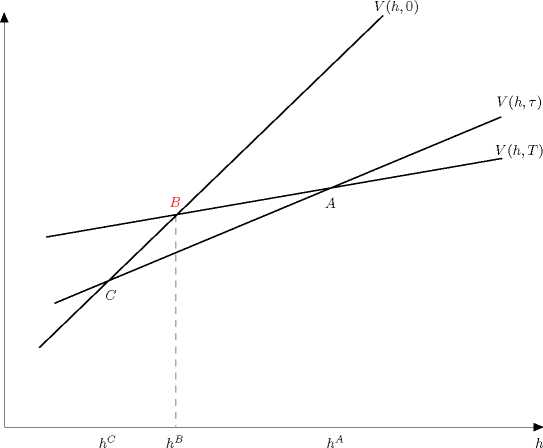Figure 3: Career Diagram without STU

LTU Employed
(λ0 = λτ = λ), implying that the sign of the derivative equals the sign of
b(1 - θ)λ(δτ + δT) - s(1 - b).
A degenerate case may occur if s is very high and b is low. Then, social benefits are so generously
granted compared to unemployment benefits that increasing eligibility for unemployment ben-
efits entails the dominating negative effect of delaying waiting time until eligibility for welfare
assistance. Of course, without welfare assistance (s = 0) this channel is always closed.
LTU is independent from retraining costs and human capital degradation because the choice
is between being never and always unemployed (∂hB/∂d = ∂hB/∂c = 0). The other derivatives
are in line with the case discussed in the main text: LTU increases for higher unemployment
benefits, higher welfare assistance, higher taxes rates, and higher labor market frictions.
24
More intriguing information
1. The name is absent2. The name is absent
3. The name is absent
4. The name is absent
5. Flatliners: Ideology and Rational Learning in the Diffusion of the Flat Tax
6. The name is absent
7. The name is absent
8. ENVIRONMENTAL POLICY: THE LEGISLATIVE AND REGULATORY AGENDA
9. Firm Closure, Financial Losses and the Consequences for an Entrepreneurial Restart
10. Errors in recorded security prices and the turn-of-the year effect